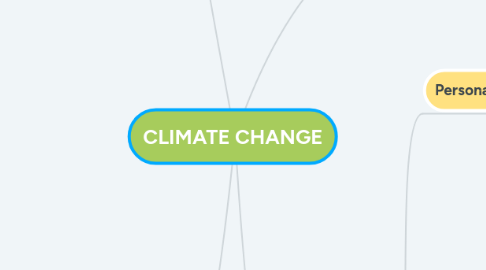
1. “Climate change is a change in the pattern of weather, and related changes in oceans, land surfaces and ice sheets, occurring over time scales of decades or longer.”
2. Masid-Danas
2.1. Possible Root Causes
2.1.1. Natural Causes
2.1.1.1. Intensity of the Sun
2.1.1.2. Volcanic Eruptions
2.1.1.3. Changes in naturally occurring greenhouse gas concentrations
2.1.2. Anthropogenic Causes
2.1.2.1. GHG (Greenhouse Gsa) Emissions
2.1.2.2. Deforestation
2.1.2.3. Fertilizer Use
2.1.2.4. Livestock Production
3. Suri-Nilay
3.1. Personal Insights
3.1.1. Climate change is an issue that would only persist if not acted upon immediately.
3.1.2. All people, organizations, and sectors must be held liable for their indifference towards the environment.
3.1.3. Climate change should be viewed as one of the most rampant issues to date. We thrive in planet earth and must therefore be responsible enough in upkeeping it.
3.1.4. Climate conditions have indeed changed over the years, and we are experiencing the consequences of it as observed from the frequency of natural calamities.
3.2. Factors
3.2.1. Socio-Cultural Factors
3.2.1.1. Ability to Cope
3.2.1.1.1. With rapidly changing climate conditions, people are forced to cope to the situation. Of course, it is worth noting that different groups have different coping mechanisms. For instance, those who are in poverty may find it more difficult to adjust due to financial constraints.
3.2.1.2. Indigenous People
3.2.1.2.1. Indigenous people living in rural areas are the ones most likely to suffer more on the effects of climate change. This affects their lifestyle, placing their cultural identities at risk.
3.2.1.3. Loss of Cultural Heritage
3.2.1.3.1. Particularly, climate change may damage cultural heritage sites such as historical landmarks.
3.2.2. Economic Factors
3.2.2.1. Economic Instability
3.2.2.1.1. Weather conditions such as typhoons and heatwaves decrease work productivity and efficiency.
3.2.2.2. Agricultural Impact
3.2.2.2.1. Unfavorable weather conditions can hinder the productivity of harvests, thus equating to fluctuating food prices.
3.2.2.3. Susceptibility to Diseases
3.2.2.3.1. Increased health risks as caused by higher temperatures allowing diseases to spread more.
3.2.3. Political Factors
3.2.3.1. Political Instability
3.2.3.1.1. Climate change entails damage to the environment, resulting to political instability as to how issues related to this matter would be resolved. An example would be how drought can bring famine, which is an issue that the government may deem difficult to ameliorate.
3.2.3.2. Demand for Accountability
3.2.3.2.1. As events related to climate change occur in succession, people may demand accountability from the government in mitigating the situation.
3.2.3.3. Corruption
3.2.3.3.1. It may be the case wherein political organizations would request for funds allocated to climate change response but would otherwise be used for ulterior motives.
4. Taya-Kilos
4.1. Mitigating Climate Change
4.1.1. Reducing Water Waste
4.1.1.1. Saving water allows the reduction of carbon pollution.
4.1.2. Unplugging Appliances
4.1.2.1. Ensure that appliances are always unplugged when not in use. In fact, idle electricity load contributes to power plant output.
4.1.3. Spreading the Word
4.1.3.1. It is important to share knowledge to others regarding the issue of climate change in order to raise awareness on the matter.
